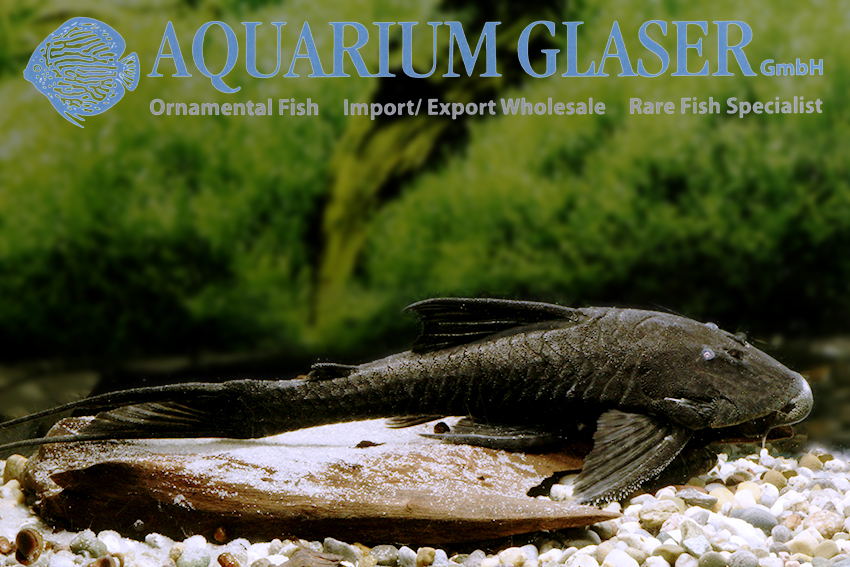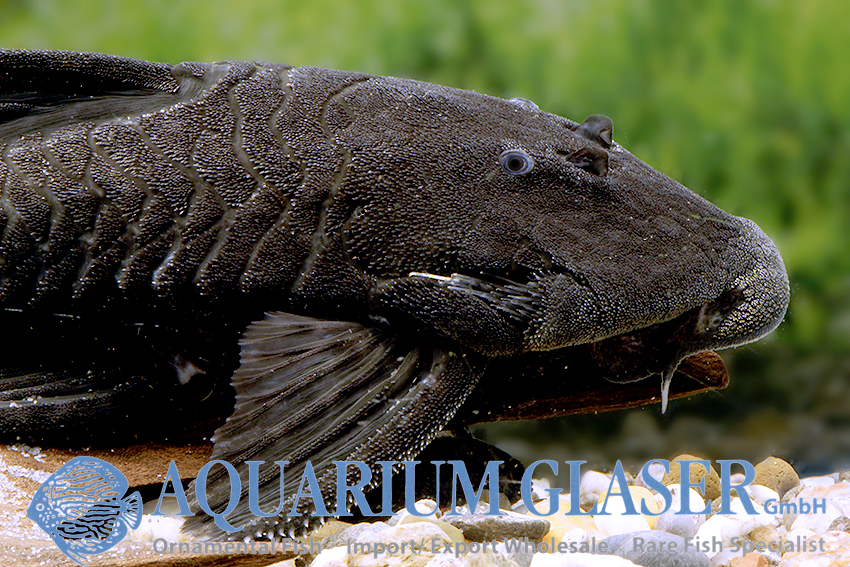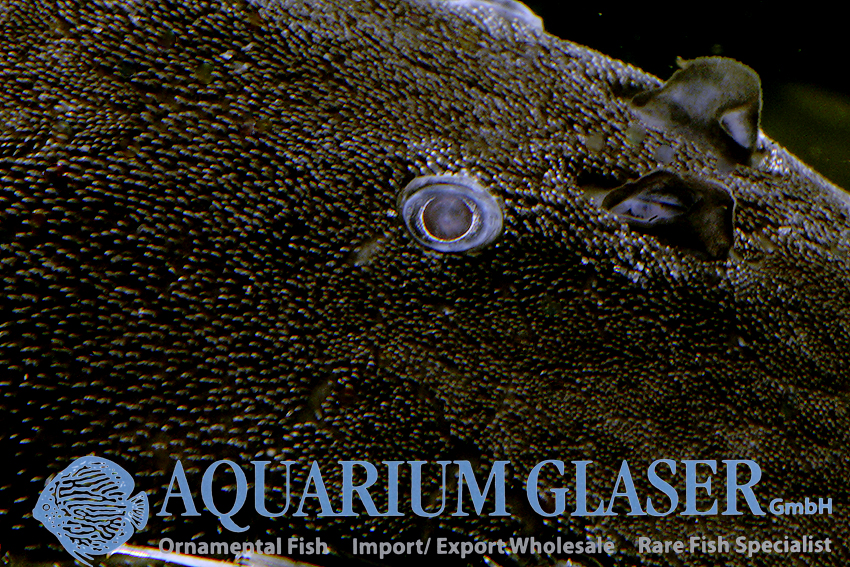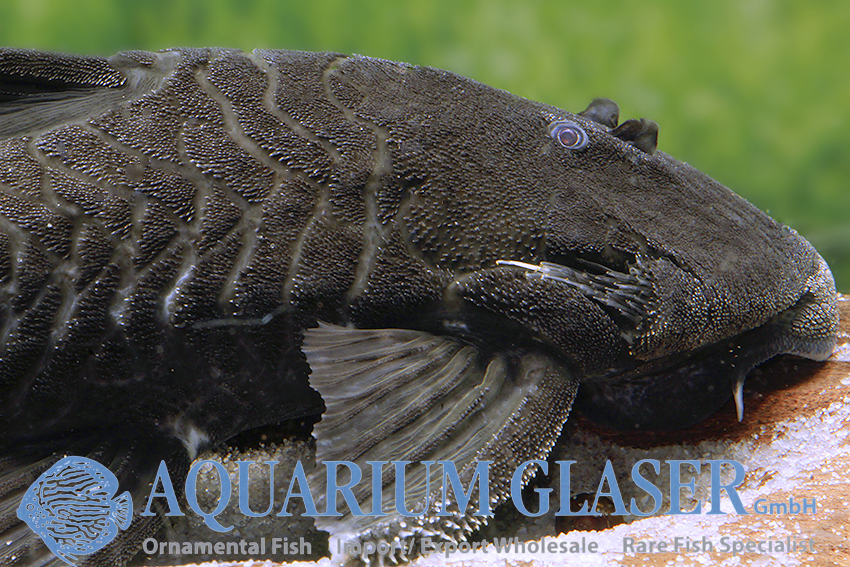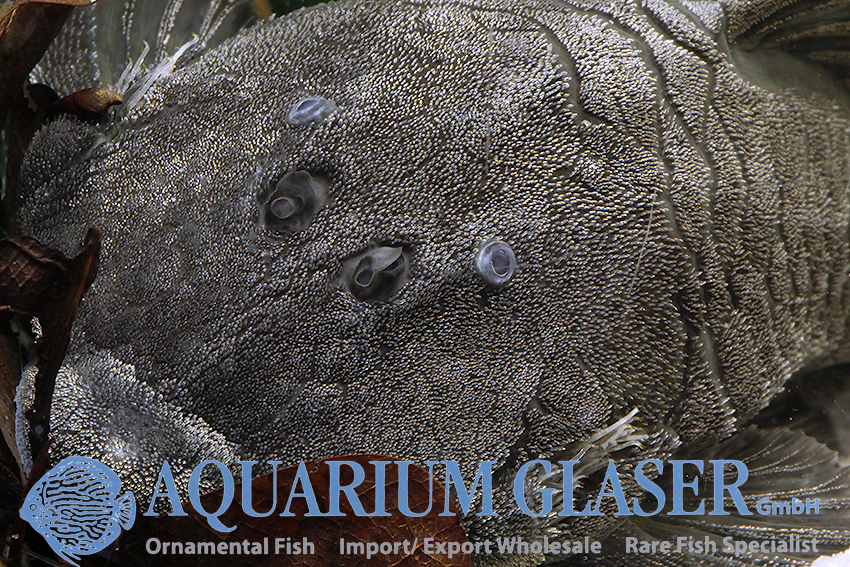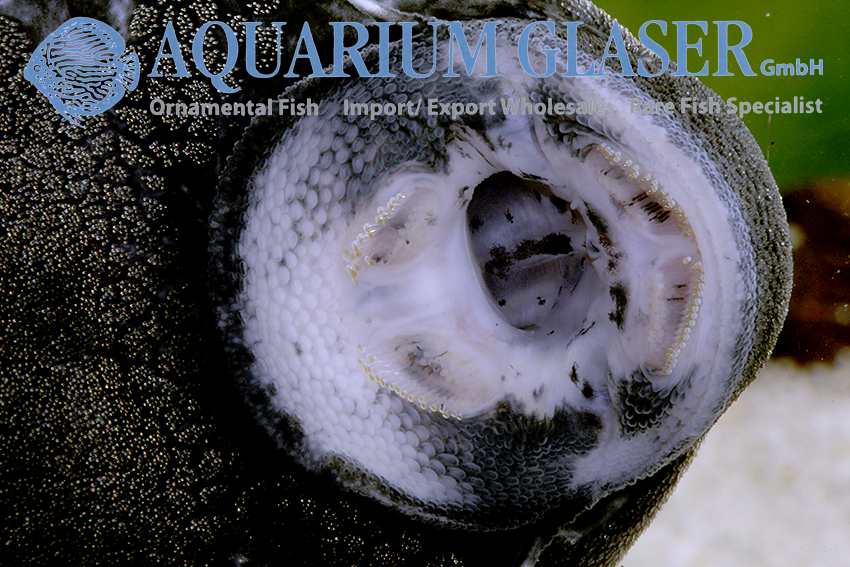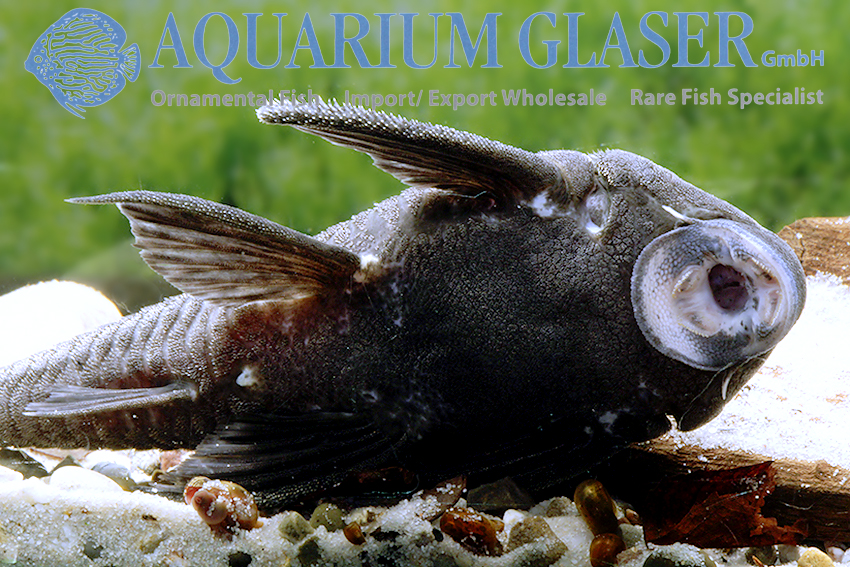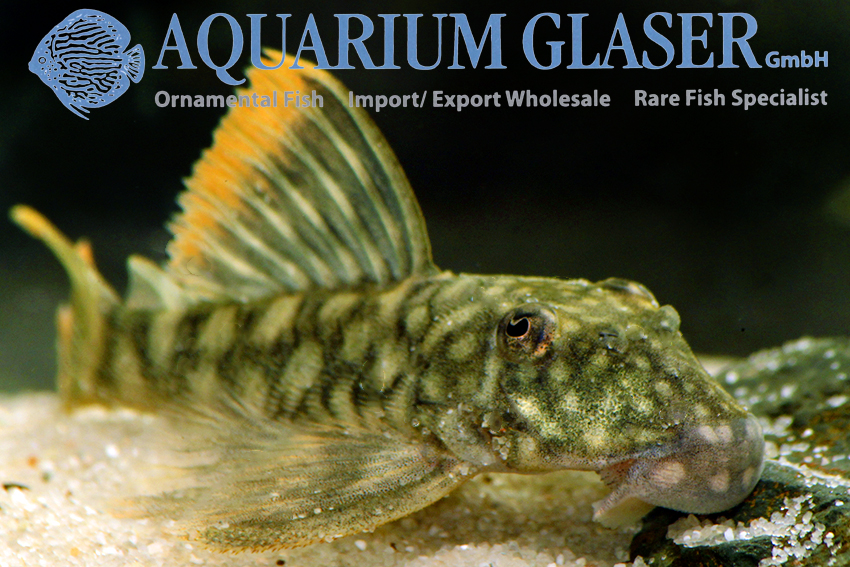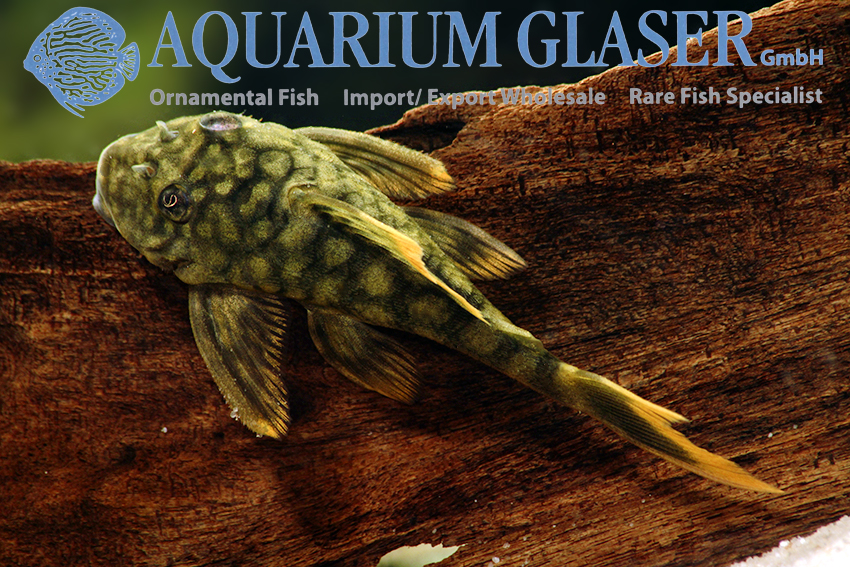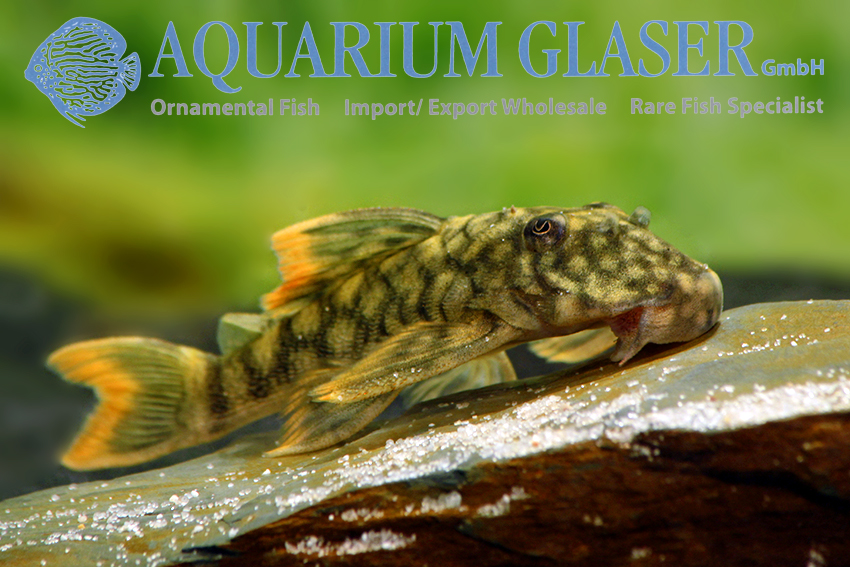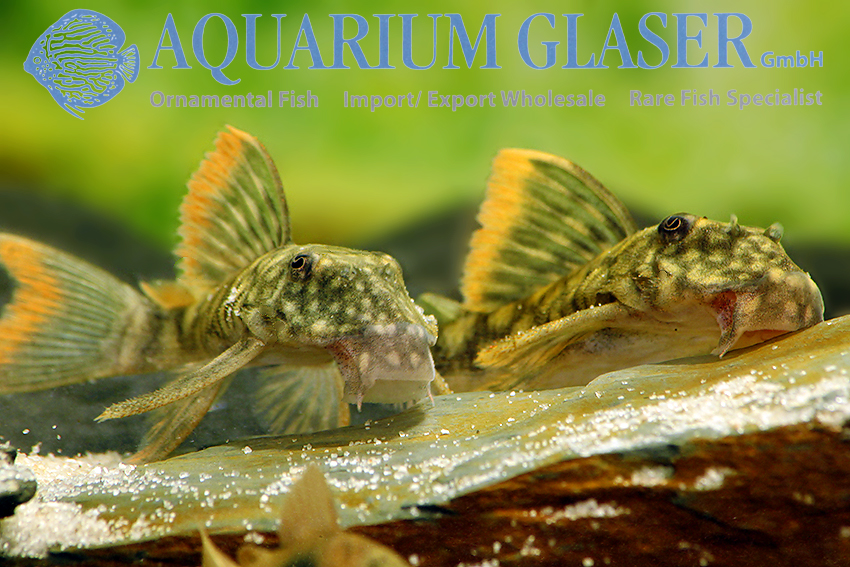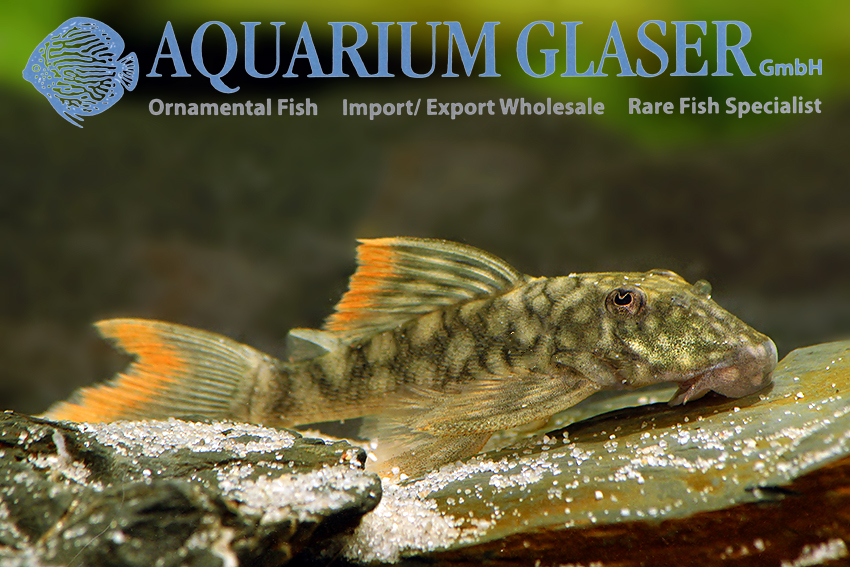From Peru we received four specimens of a top rarity: L350. This peculiar fish does not fit any genus of loricariid catfish known to date. It originates from deep, turbid, very fast flowing water of the Peruvian Amazon, where it can only be caught with great difficulty and rarely. It is a carnivorous species whose interesting black and white mouth disc pattern is characteristic of the species. There are occasional snow-white speckles on the ventral side, and the upper side is a pure jet black. The maximum final size is unknown, but specimens 40 cm long have been offered; exporters usually count the caudal fin, but not the very long caudal fin filaments, as part of the length. Our four animals are currently 14-18 cm long.
Sometimes L350 is equated with a species that is anatomically similar to it, but unlike L350 is completely colorless: Hemiancistrus (or Peckoltia) pankimpuju. So far only two specimens of H. pankimpuju are known, and they lack any color pigment. Such bright whte animals have not been offered on the ornamental fish market so far. It is not completely excluded that the raven black L350 discolors at certain times (similar to what is known from golden Parancistrus aurantiacus). However, it does not seem very likely.
For our customers: the fish have code 26480-L 350-6 on our stocklist. Please note that we supply exclusively to wholesalers.
Text & photos: Frank Schäfer





